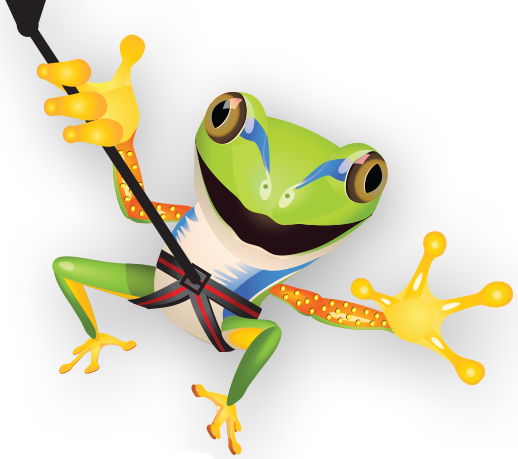Zip-line has been used as a transportation method in some mountainous countries for many years. The first known use of the zip-line was back in 1739 when Robert Cadman, a steeplejack and ropeslider, died when his rope snapped, while descending from Shrewsbury's St. Mary's Church. In the spring of 1906, Alberto Santos-Dumont used a direct descendant of today's zip-line to test various characteristics of his 14bis pioneer-era canard biplane...before it ever flew under its own power, later that same year.
The term "flying fox" is most commonly used to refer to a small-scale zip-line, typically used as an item in children's playground equipment. Kid's versions are not set up with a steep incline so the speeds are relatively slow and thus don't need a means of stopping. To be propelled by gravity, the cable needs a fairly steep slope and so the adult version of this ride does need some means of stopping, since the car will not travel completely to the end.
professional versions of the zip-line are most typically used as an outdoor adventure activity. These are operated at higher speeds and cover much longer distances, often at great heights. The user is generally attached to the cable by a harness that attaches to a removable trolley.
Professional versions of a zip-line are most typically used as an outdoor adventure activity. In contrast to "flying foxes" professional courses are usually operated at higher speeds, covering much longer distances and sometimes at considerable heights. The users are physically attached to the cable by a harness that attaches to a removable trolley. Helmets are required gear for zipliners of all ages and experience.
Cables can be very high, starting at a height of over 9 m (30 ft), and traveling well over 460 m (1,510 ft). All zip-line cables have some degree of sag. The proper tensioning of a cable is important and allows the ability to fine-tune the ride of a zip-line. Users of zip-lines must have means of stopping themselves. Typically these can be anything from tough purpose-built leather gloves to a hand brake at the end of the zip-line.
With proper knowledge and training on the part of the operators and good maintenance, zip lines are safe and easy to use. In 2012 there were an estimated 200 commercial zip lines in the US and a further 13,000 private ones. These numbers are growing, not only in the US but world wide.
As of December, 2015, the longest zip-line was "Parque de Aventura Barrancas del Cobre" at 2545 m (8,350 ft), in Copper Cove, Mexico. ZipFlyer Nepal, which opened in 2012, is listed as having the world's steepest incline of 56%! Currently it ranks second, but it is still the tallest zip-line. It has a vertical drop of 610 m (2,000 ft). In September 2015, the steepest zip-line opened in Planica, Slovenia. It is 566 meters (1,857 ft) long with a jaw-dropping 202 meters (663 ft) vertical drop. The longest zip-line in Europe is located in Bethesda, Wales. It runs an impressive 1600 meters in length (5,249.34 feet). It also holds the record for being the fastest. zip-line in the world.
The jungles of Costa Rica, Florida, Puerto Vallarta, and Nicaragua are popular destinations for zip line enthusiasts. And now we can add Land of Lily Pad to this list! I've always wanted to know what it was like to be a flying frog...up high and gliding from one place to another. This weekend, I'll actually get to experience it!
Whatever your plans are for the weekend, I hope it includes some adventure. A little adventure makes us feel alive and is good for bringing out the kid in us. Just stay safe! Enjoy yourselves and I invite you back her on Monday. Now go get some necessary R & R. You've earned it.

 RSS Feed
RSS Feed